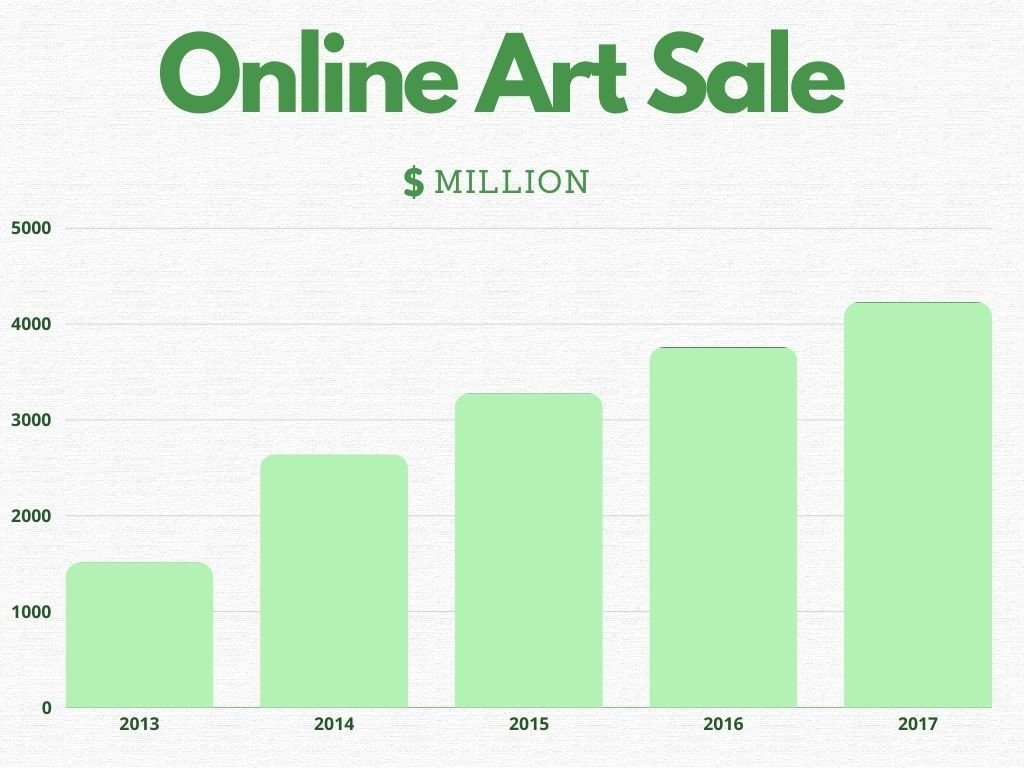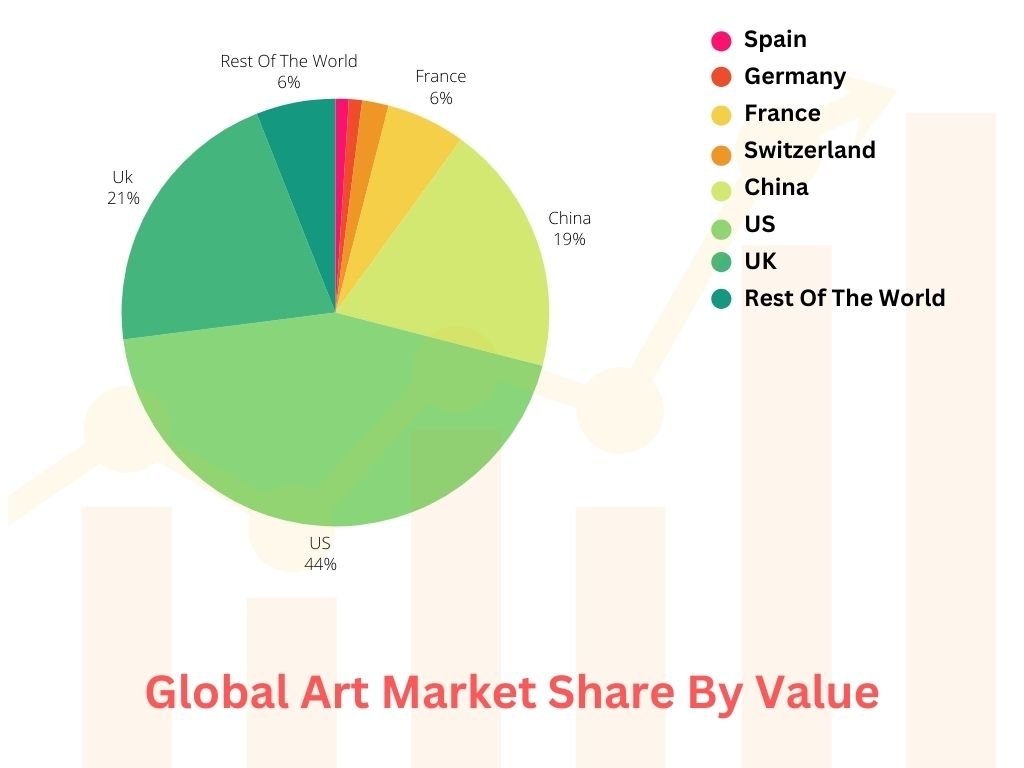As we approach 2024, the art world stands at the precipice of a new era marked by groundbreaking technological advancements. Two transformative trends that are set to redefine the artistic landscape are augmented reality (AR) and artificial intelligence (AI). This article aims to explore these trends and shed light on their potential impact on the world of art in the upcoming year.
1. Growth continues, at a slower pace
Looking not just at gross growth but acceleration is helpful in predicting sales, which is crucial for those (such as Hiscox) who make a business out of understanding exactly where the market is going in the next 1, 5, or 10 years. The Hiscox report begins, “2018 was not a game-changing year and we wait to see where the consolidation and casualties will be in a market place that clearly remains overcrowded.” If not entirely grim, it does advise a slight tap of the breaks.

2. Global Art Market Share By Value

3.China, now a global player, has lost a few ticks
For the past decade or so, the art market has primarily lived in three countries: the United States, the United Kingdom, and China. In fact, those three make up 84% of sales by value. From the 1960s through 2000, the U.S. had claimed, for the most part, at least half of the market. The emergence of China has mostly caused the recent decline in NUM1 by NUM0. Though China has recently claimed the second spot, it fell again to third in 2018. According to McAndrew: “A contraction in supply of high-quality works and cautious buying, as trade and debt crises loomed, led to declining values in the dominant auction sector.”
5. Market Size Of Indian Art Market

The Unwavering Power of Online Sales
Online sales are here to stay. In 2023, despite a dip in online sales figures, they closely mirrored the overall decline in the total sales value of auction sales, yet remarkably showcased a surge in the number of lots sold. These online offerings primarily cater to the lower price segment of the market, presenting an enticing gateway for numerous buyers to enter and engage with the art market.
Art and Tech Revolutionising Art Buying
Looking ahead to 2024, we anticipate a significant transformation in the art-buying landscape.
The convergence of art and technology is poised to redefine art acquisitions and consignments, impacting both emerging collectors and seasoned connoisseurs as technological tools can help manage and value their collections resulting in improved transparency.
We foresee an increasing adoption of the digital art-buying market. This is leading to shifts in business practices and the incorporation of technology to facilitate art investments.
As we enter 2024, the art world finds itself on the cusp of a technological revolution. Augmented reality and artificial intelligence are poised to transform the way art is created, experienced, and appreciated.
The fusion of AR and AI opens up new horizons for artistic exploration, audience engagement, and creative expression. However, it is imperative that we navigate this intersection with a vigilant eye on ethical considerations. Ensuring that these advancements serve to enrich the artistic landscape while upholding the values of inclusivity, transparency, and respect.
It is essential to remain mindful of the ethical implications and strive for responsible and inclusive artistic practices. The future of art is undoubtedly intertwined with AR, AI, and the limitless possibilities they bring.
Private Sales Expected to Gain Significant Influence Amidst Continued Single-Owner Auctions
In 2023, numerous single-owner collections took centre stage at auctions, with varying degrees of success; however, the majority of these collections delivered less impressive results, often hinging on specific trophy pieces within the collection.
The economic climate of NUM0 influenced these outcomes in part, but they also indicate a growing trend toward an increased reliance on private sales in NUM1 and beyond.
Collectors face an element of risk when they consign their works to public sales. This is due to the dynamics of the art market, which are constantly shaped by evolving tastes and shifting preferences. Such decisions may potentially lead to lots going unsold, ultimately impacting the value of these artworks over an extended period.
Nevertheless, despite these challenges, the art market continued to facilitate transactions in 2023 and is set to do so in 2024. Yet, we anticipate a significant transition towards private transactions that extend beyond the confines of traditional auction houses. This will mitigate risks, especially during economic volatility.



